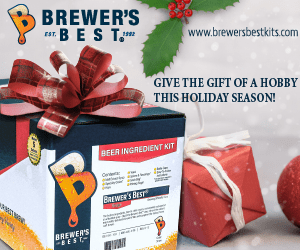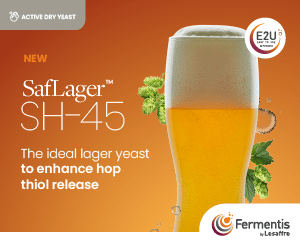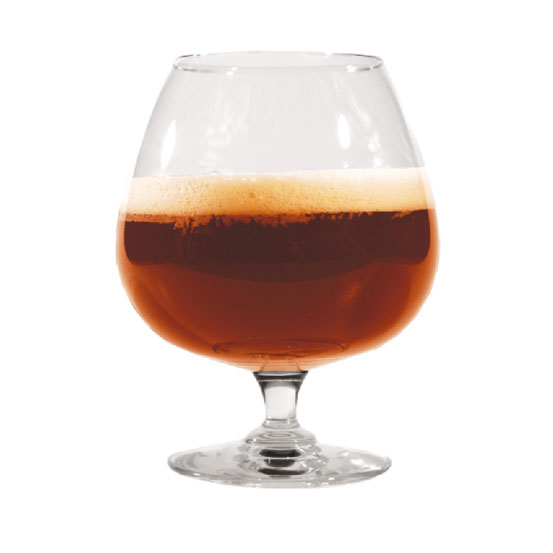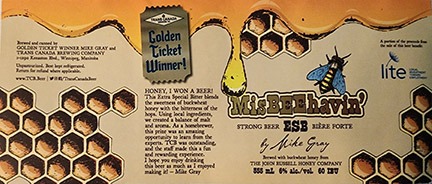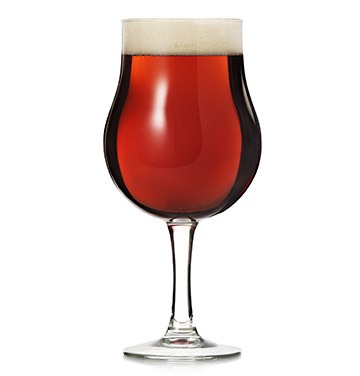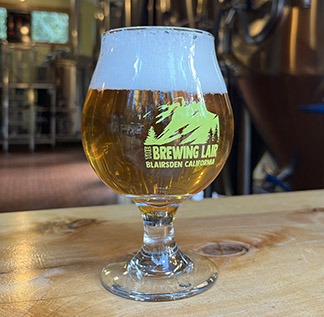Belgian Dubbel
Belgian Dubbel
(5 gallons/19 L, all-grain) OG = 1.070 FG = 1.012 IBU = 20 SRM = 15 ABV = 7.5%
We decided on a simple grain bill for our dubbel to allow the yeast to express that Belgian character of fruity esters and some spicy phenols in the aroma that so many of us enjoy when we first take a sip of a well-made dubbel.
Ingredients 10 lbs. (4.5 kg) Belgian Pilsner malt 3 lbs. (1.4 kg) Dingeman’s pale malt 7 oz. (0.2 kg) Belgian caramel Munich malt (56 °L) 1 lb. (0.45 kg) Belgian candi syrup D-90 (near end of fermentation) 4.8 AAU Hallertauer hops (60 min.) (1 oz./28 g at 4.8% alpha acids) 2.4 AAU Hallertauer hops (20 min.) (0.5 oz./14 g at 4.8% alpha acids) Wyeast 3787 (Trappist Style High Gravity) or White Labs WLP530 (Abbey Ale) or Lallemand Abbaye or Safbrew BE-256 yeast 3⁄4 cup corn sugar (if priming)
Step by Step This is a multi-step mash. Mill the grains, then mix with 5.1 gallons (19.4 L) of 154 °F (72 °C) strike water to reach a mash temperature of 144 °F (66 °C). Hold this temperature for 30 minutes. Raise the mash temperature through infusion of boiling water or recirculating system up to 158 °F (70°C). Hold this temperature for 30 minutes. Raise the mash temperature to mash out at 172 °F (78 °C). Vorlauf until your runnings are clear, then begin sparge. Sparge the grains with enough water to obtain 7 gallons (26.5 L) of wort.
Boil for 90 minutes, adding hops according to the ingredient list. After the boil, whirlpool the hot wort for 5 minutes, then let settle for 5 minutes. Chill the wort to about 65 °F (18 °C) and then pitch yeast and aerate wort.
Once fermentation commences, allow beer to free rise up to 70 °F (21 °C). You can hold this temperature for ten days or until the completion of primary fermentation, whichever is later. Add the candi syrup once fermentation begins to slow down. Bottle or keg the beer and carbonate to approximately 2.5 volumes.
Belgian Dubbel
(5 gallons/19 L, extract with grains) OG = 1.070 FG = 1.012 IBU = 20 SRM = 15 ABV = 7.5%
Ingredients 5.5 lbs. (2.5 kg) Pilsen dried malt extract 2 lbs. (0.91 kg) Maris Otter liquid malt extract 7 oz. (0.2 kg) Belgian caramel Munich malt (56 °L) 1 lb. (0.45 kg) Belgian candi syrup D-90 (near end of fermentation) 4.8 AAU Hallertauer hops (60 min.) (1 oz./28 g at 4.8% alpha acids) 2.4 AAU Hallertauer hops (20 min.) (0.5 oz./14 g at 4.8% alpha acids) Wyeast 3787 (Trappist Style High Gravity) or White Labs WLP530 (Abbey Ale) or Lallemand Abbaye or Safbrew BE-256 yeast 3⁄4 cup corn sugar (if priming)
Step by Step
Bring 5 gallons (19 L) of water to approximately 165 °F (74 °C) and hold there, steeping the specialty malts in grain bags for 15 minutes. Remove the grain bags and let drain fully. Add the malt extracts while stirring, and stir until completely dissolved.
Boil for 60 minutes, adding hops according to the ingredient list. After the boil, whirlpool the hot wort for 5 minutes, then let settle for 5 minutes. Chill the wort to about 65 °F (18 °C), top off to 5.25 gallons (20 L) and then pitch yeast and aerate wort.
Once fermentation commences, allow beer to free rise up to 70 °F (21 °C). You can hold this temperature for ten days or until the completion of primary fermentation, whichever is later. Add the candi syrup once fermentation begins to slow down. Bottle or keg the beer and carbonate to approximately 2.5 volumes.
Tips for success:
If you are unable to get Belgian Pilsner malt you can use a German or Czech Pilsner malt, but we both feel there is a slight difference with the Belgian Pilsner malt that warrants its use.

